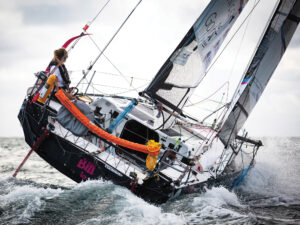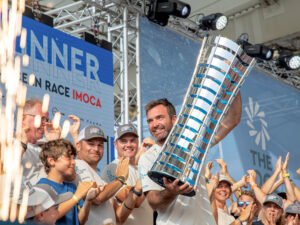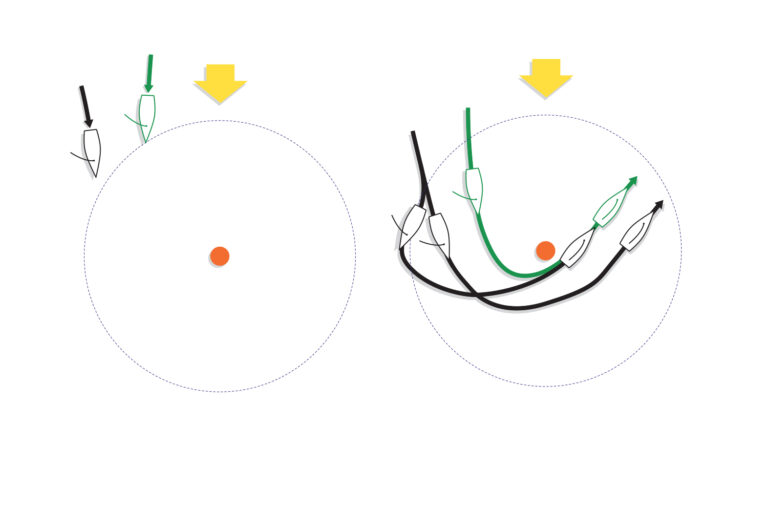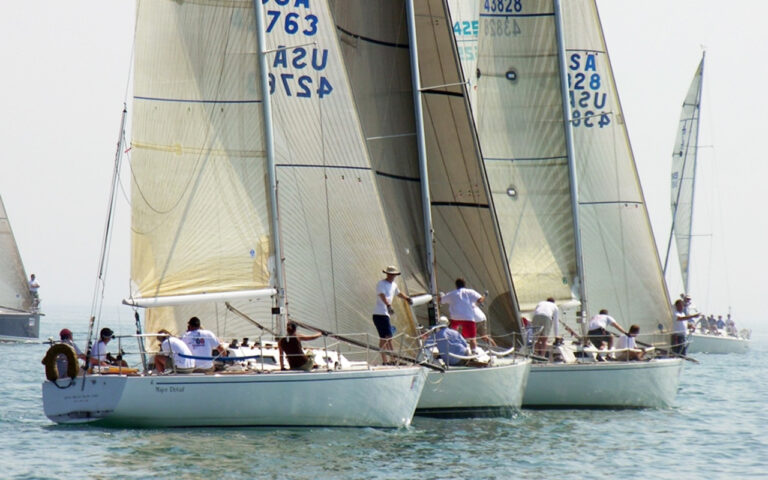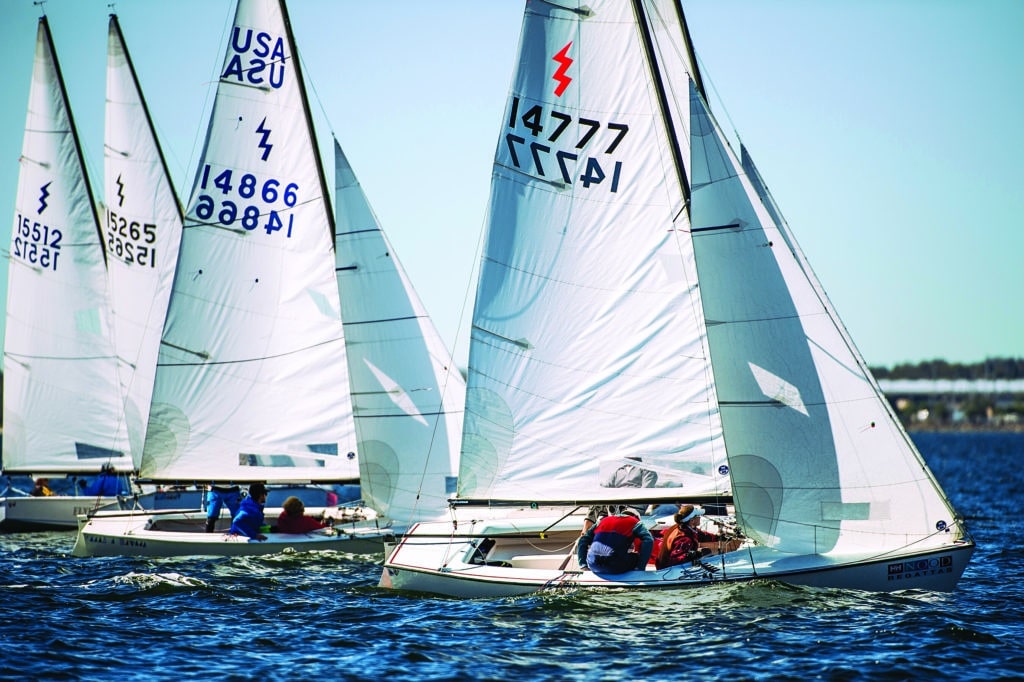
When I turned 21, I dropped out of college, moved to Ohio, and went to work for Greg Fisher at Shore Sails. What he got was an employee. What I got was an invaluable education, one that I’ve relied on ever since.
It was the mid-1980s, and Fisher was the model sailing-industry professional. He excelled on the racecourse but was even better onshore. He was highly personable and a tireless giver. He was a road warrior, driving throughout the winter giving seminars, and at regattas he helped his competitors, customers or not. Most were his customers anyway, because his sails were fast and he was a reputable guy.
As a career sailmaker for 12 years, I was also a pro sailor, and I emulated Fisher. It was one hell of a job. I sailed a lot, steered my own boats, traveled to all corners of the country, and met tremendous people. I knew then that if I and my colleagues were to make a decent living, the sport and its participants had to succeed first and foremost. Our existence was a privilege. We were in a position to help people enjoy their regattas, on the water, on land, and even late into the night, if required.
The changing impact of industry pros on competitive sailing, however, hasn’t been entirely positive. Yes, there are outstanding modern-day pros like Fisher, who contribute in positive ways, but there are plenty of bad apples too. These are the individuals who either can’t — or won’t — look beyond their reputation, their personal gain or their day rate.
The rise of competitiveness put a price on expertise. Eventually the top sailors found that products offered less profit than their skills. Inevitably, sailors began charging owners to crew. Good sails, a fast boat and practice still count, but the skill of a crew and coaching have escalated in importance dramatically. For many raceboat owners today, to play and be a player, you simply have to pay.
The sport has evolved with this trend. Raceboats and equipment now require more specialized skills to use and own. “New and improved” means more technical, so more training is now required. One-design classes have created Corinthian divisions to satisfy amateur teams, but they rely on the International Sailor Classification Code, which wrongly defines professionals. When riggers and boat brokers are lumped into the same category with Hall-of-Famers and Olympians, the system is flawed. Because the code allows sailors under the age of 24 to qualify as amateurs, yet allows them to also be paid, we can have Corinthian winners paying crew or being supported by regatta coaches. Yikes.
“So what?” some say. “Nothing today is easier or cheaper than it used to be; every sport has been impacted by heightened effort.” They’re right. Plus, when an owner pays for “expertise,” he or she is also learning. If the relationship is good, the owner and the team will improve as a result. There is a danger, however. When pros are selling you their expertise, there’s no motivation for them to help others. When this happens, the culture of knowledge-sharing becomes splintered. Industry pros will try to help the stragglers, but now even the industry status of “expert” is threatened. The primary job of professional crews and coaches is to accumulate expertise. They’re on the water a lot more than many other industry pros.
What’s ironic is how traditional sailmakers like those of Fisher’s era seem to have lost their edge on the racecourse. When the best sailors are getting paid well over $2,000 a day, the advantage is skewed. That’s not the kind of money most industry pros can afford, but certainly a pro helm can beat a pro crew, right? Not necessarily. Youngsters Gannon Troutman, in the J/70, and Liam Kilroy, in the Melges 20, are each at the top of their respective classes, which is a clear indication of how good pro-supported programs are today.
However, if our current culture encourages owners to hire pro crew and coaches, we should not begrudge the situation. Games are to be played by the rules, and our rules are intended to fairly handicap boats or limit performance variables on a one-design boat. If the rules allow for an unrated advantage on a handicap boat, or provide a speed boost on an otherwise restricted class boat, the smart guys who are paying close attention will take advantage. This is how games are played, but at what cost?
Perhaps the cost is our own demise. As our recreation becomes more competitive and costly, fewer people will be willing to invest and participate. We talk often about growing our sport, but as long as we allow the culture of competition to rage without restriction, growth will be restrained.
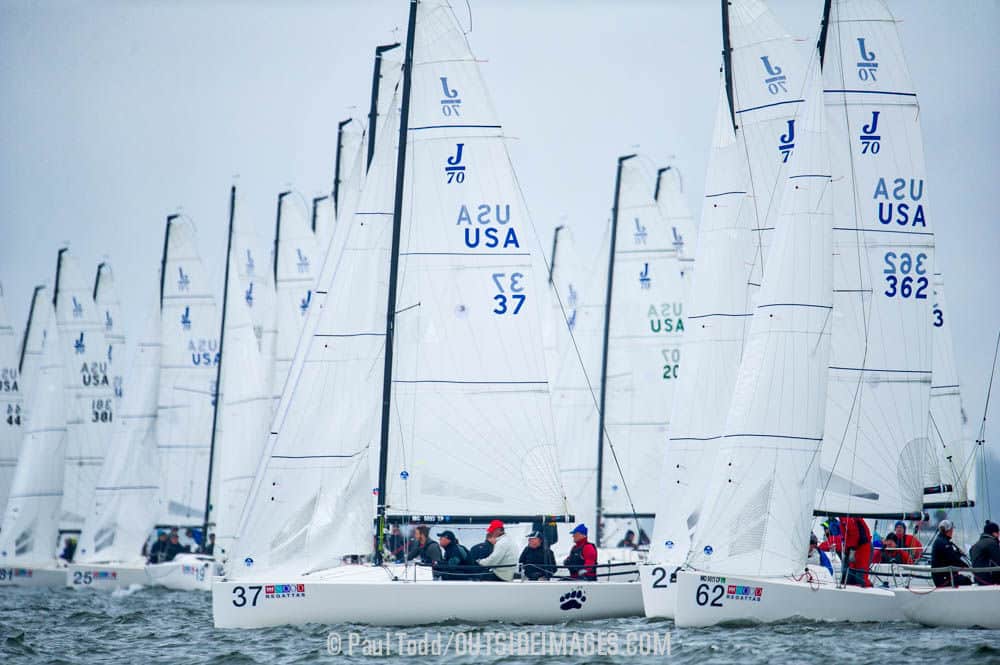
Again, “So what?” some say. I agree.
Every racing class and event can be whatever it wants to be. Any attempt to limit professionalism relies on a classification system that penalizes industry pros while it restricts the pro crew. Most handicap events do not have limits; there are only a few that have Corinthian divisions. Some classes do not allow pros, or in the case of the Viper 640, they permit pros as long as they’re not paid to sail. Some classes limit the number of pros in the crew, but as past Classification Commission chairman Antony Matusch observes, this approach is “too often risky.” It leads, he says, to what was once described as the best amateur crew money can buy.
“If this happens,” he says, “eventually the honest or less well-off owner walks away.”
As Matusch implies, whatever the level of racing a recreational fleet dictates, it is only maintained through a managed culture. Rules will work only when participants are honest. If limits are desired, then it has to be through friendship and respect that they are observed. This kind of culture occurs when racing is not the only focus and when a social element is an intrinsic part of the program.
This becomes tricky, however, when those socializing are employers and employees rather than an organic collection of friends. It’s notable that some of our vintage one-design classes, like the Lightning class, which have established local fleets, are not as impacted by professionalism. Cultivating a healthy culture is most easily done on the local level.
Perhaps the crew-paying climate has cause. In the Star class, for example, where the pro-crew trend got early traction, I know of skippers who find the cost to be “money well spent” if it keeps their $5,000 mast from breaking. As winter race circuits have expanded, crew recruitment has become a challenge without compensation. These events have come to offer a bonanza day rate for pro crews, and with some of the big-boat campaigns in action, the cost of labor is a small percentage of the budget. That’s a slippery slope, however; as America’s Cup icon Russell Coutts often says, labor is a significant line item in a campaign (especially when grinders for his team are reported to earn $300,000 per year).
It’s often said how rare a sport sailing is, to allow rank amateurs to trade tacks with rock stars. It’s both a privilege and an opportunity to learn from the best, but only when learning is allowed to occur. It’s not much of a test when you’re using a wooden racket to the competition’s composite model. “Everybody might say they want to race against the best sailors in a highly competitive environment, and for some, that is true,” says Hall of Fame inductee Dave Ullman. “But there is a larger group that might like it for a while, but ultimately it becomes too much.” The big question I believe we need to ask, therefore, is whether the impact of professionalism is too much.
Scuttlebutt once ran a poll asking if one-design classes with a significant number of professional entries should begin considering hosting Corinthian-only events. Eighty-one percent of the respondents said yes. Typically, events with a Corinthian division are run as one fleet, with the results including a subdivision for amateur teams. This plan maximizes participation, but is it a solution or a Band-Aid? If the lights still shine brightest on the pro teams, is it sufficiently fulfilling for the amateurs?
Regardless, the sport must always come first. Every professional sailor must ensure the sport is healthy and that everyone is gaining. Boat owners competing in an environment influenced by professionalism should consider what the healthiest solution is for everyone, because the boat’s value depends on it.
If you are a sailor still unaffected by the impact of professionalism, note now that the genie is out of the bottle, and it’s not going back in. Strengthen your culture and tighten your rules, because change is far more difficult to grow once the true sailors start abandoning their ships.

